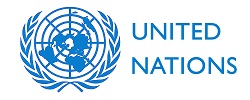What does it mean for a hospital to be ready for disaster?
Health systems have learned a few lessons from the recent hurricanes in Texas and Florida, but experts say many are currently still not fully prepared to deal with disaster.
Disasters — both natural and manmade — are a fact of life. Hospitals sometimes spend significant amounts of time and money preparing for situations they hope never arise, but know would make maintaining their operations more critical than ever.
In September, several hospitals in southeast Texas had to evacuate patients as Hurricane Harvey hit the area. With unprecedented flood waters, some of them will be cleaning up for at least the next few months. Not long after, Hurricane Irma forced about three dozen hospitals in Florida to close down or call for evacuation. Health systems and clinics in both areas were dealing with power outages and impassable roads during the worst of the storms.
Read the whole article here.
Deliver Humanitarian Aid
One of the purposes of the United Nations, as stated in its Charter, is „to achieve international co-operation in solving international problems of an economic, social, cultural, or humanitarian character.“ The UN first did this in the aftermath of the Second World War on the devastated continent of Europe, which it helped to rebuild. The Organization is now relied upon by the international community to coordinate humanitarian relief operations due to natural and man-made disasters in areas beyond the relief capacity of national authorities alone.
What key UN entities deliver humanitarian aid?
Four UN entities, the United Nations Development Programme (UNDP), the United Nations Refugee Agency (UNHCR), the United Nations Children’s Fund (UNICEF) and the World Food Programme (WFP) have primary roles in the delivery of relief assistance.
Helping refugees
The UN Refugee Agency (UNHCR) emerged in the wake of World War II to help Europeans displaced by that conflict. The agency leads and coordinates international action to protect refugees and resolve refugee problems worldwide. The UN General Assembly hosted a high-level meeting on 19 September 2016 to address large movements of refugees and migrants, with the aim of bringing countries together behind a more humane and coordinated approach.
Helping Children
Since its beginning, The United Nations Children’s Fund (UNICEF) has strived to reach as many children as possible with effective, low-cost solutions to counter the biggest threats to their survival. UNICEF also consistently urges governments and warring parties to act more effectively to protect children.
Feeding the Hungry
The World Food Programme (WFP) provides relief to millions of people, who are victims of disasters. It is responsible for mobilizing food and funds for transport for all large-scale refugee-feeding operations managed by UNHCR.
The Food and Agriculture Organization of the United Nations (FAO) is often called on to help farmers re-establish production following floods, outbreaks of livestock disease and similar emergencies. The FAO Global Information and Early Warning System issues monthly reports on the world food situation. Special alerts identify, for Governments and relief organizations, countries threatened by food shortages.
Healing the Sick
The World Health Organization (WHO) coordinates the international response to humanitarian health emergencies. WHO is responsible for providing leadership on global health matters, shaping the health research agenda, setting norms and standards, articulating evidence-based policy options, providing technical support to countries and monitoring and assessing health trends. In the 21st century, health is a shared responsibility, involving equitable access to essential care and collective defence against transnational threats.
Find more information here.
Disaster Risk Management for Health – Overview
 What is disaster risk management for health?
What is disaster risk management for health?
Disasters and other emergencies often result in significant impacts on people’s health, including the loss of many lives. Every new threat reveals the challenges for managing health risks and effects of emergencies and disasters. Deaths, injuries, diseases, disabilities, psychosocial problems and other health impacts can be avoided or reduced by disaster risk management measures involving health and other sectors.
The traditional focus of the health sector has been on the response to emergencies. The ongoing challenge is to broaden the focus of disaster risk management for health from that of response and recovery to a more proactive approach which emphasises prevention and mitigation, and the development of community and country capacities to provide timely and effective response and recovery. Resilient health systems based on primary health care at community level can reduce underlying vulnerability, protect health facilities and services, and scale-up the response to meet the wide-ranging health needs in disasters.
Find the Fact Sheet of the WHO on Disaster Risk Management for Health here.
Watch this interesting video about the WHO sending NCDs medicines and materials kits to places where humanitarian crises take place.
Published in GI-Mail 11/2017 (English edition). Sign up for GI-Mail here. 
Tip: More up to date educational events can be found online in the Education Database »medicine & health«.

